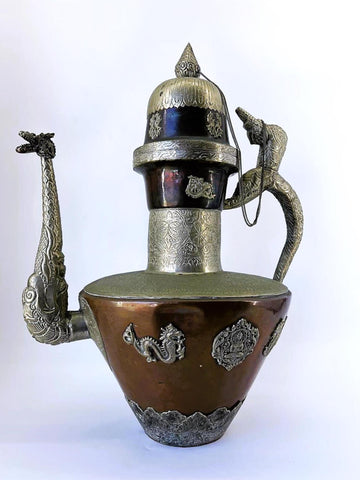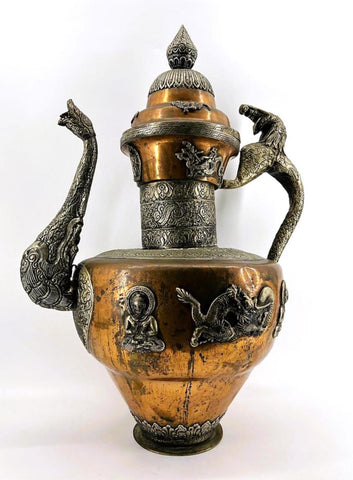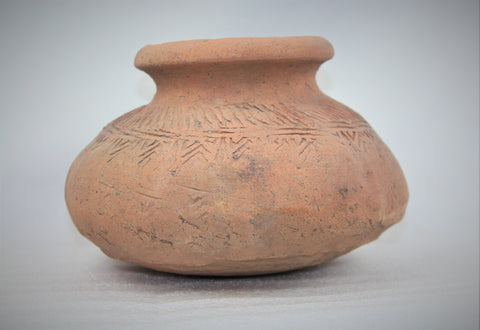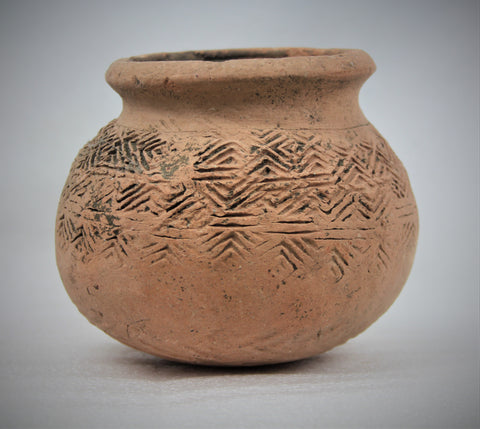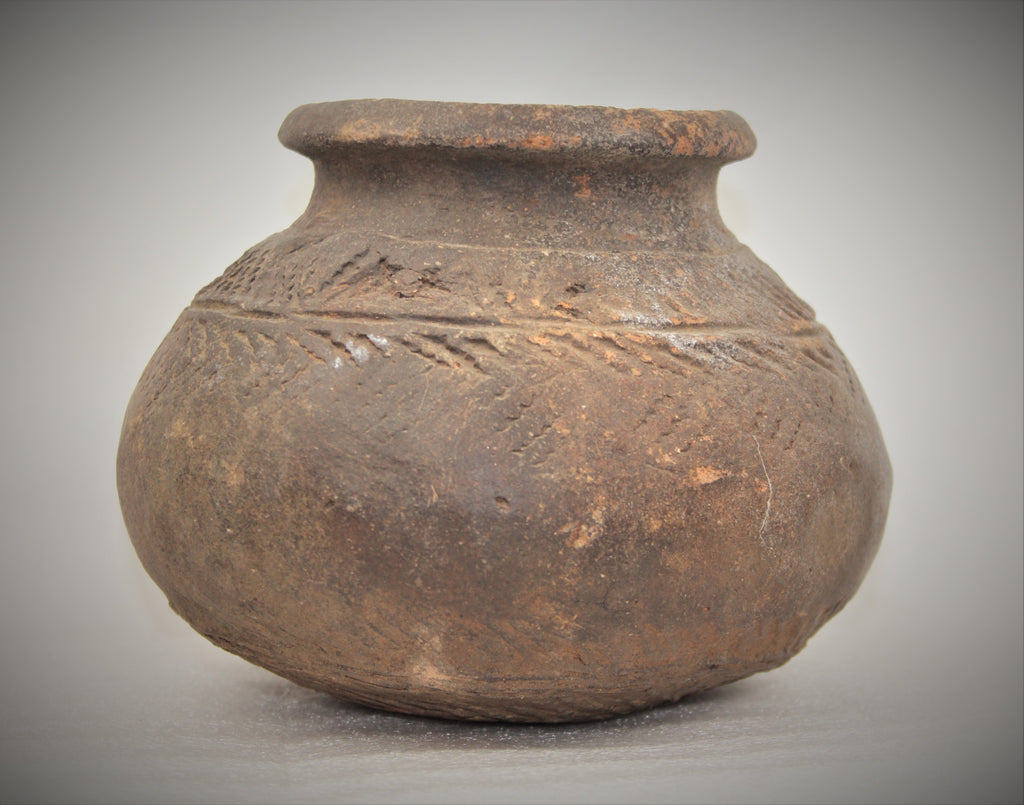
Historic Terracotta pottery from the Ayutthaya Ruins outside of Bangkok, Thailand, #1648
$ 350.00
Historic Terracotta pottery from the Ayutthaya Ruins outside of Bangkok, Thailand, #1648
Thailand, Ayutthaya pottery originating from the Ayutthaya culture in Thailand. These are the main remnants of the daily pottery of the people. The pot has been tested for authenticity using thermo-luminescence testing. Dating indicates the piece is from around 1351-1762 AD.
Dimensions: 7" x 5"
Condition: Excellent condition for its age. The pottery has a XX hatching or incising on the exterior surface for decoration.
Provenance: From a Dutch Collection. Collected by missionaries living in the region between 1955-1969. They were brought to the Netherlands in 1980.
Ayutthaya (full name Phra Nakhon Si Ayutthaya, Thai: พระนครศรีอยุธยา, pronounced [pʰráʔ na.kʰɔ̄ːn sǐː ʔa.jút.tʰa.jāː] (Pronunciation); also spelled "Ayudhya") city is the capital of Ayutthaya province in Thailand.
Located in the valley of the Chao Phraya River, the city was founded in 1350 by King U Thong, who went there to escape a smallpox outbreak in Lop Buri and proclaimed it the capital of his kingdom, often referred to as the Ayutthaya kingdom or Siam.
Ayutthaya became the second Siamese capital after Sukhothai. It is estimated that Ayutthaya by the year 1600 CE had a population of about 300,000, with the population perhaps reaching 1,000,000 around 1700 CE, making it one of the world's largest cities at that time, when it was sometimes known as the "Venice of the East".
In 1767, the city was destroyed by the Burmese army, resulting in the collapse of the kingdom. The ruins of the old city are preserved in the Ayutthaya historical park, which is recognized internationally as a UNESCO World Heritage Site. The ruins, characterized by the prang (reliquary towers) and gigantic monasteries, give an idea of the city's past splendor. Modern Ayutthaya was re-founded a few kilometers to the east. (Source: Wikipedia)
Thailand, Ayutthaya pottery originating from the Ayutthaya culture in Thailand. These are the main remnants of the daily pottery of the people. The pot has been tested for authenticity using thermo-luminescence testing. Dating indicates the piece is from around 1351-1762 AD.
Dimensions: 7" x 5"
Condition: Excellent condition for its age. The pottery has a XX hatching or incising on the exterior surface for decoration.
Provenance: From a Dutch Collection. Collected by missionaries living in the region between 1955-1969. They were brought to the Netherlands in 1980.
Ayutthaya (full name Phra Nakhon Si Ayutthaya, Thai: พระนครศรีอยุธยา, pronounced [pʰráʔ na.kʰɔ̄ːn sǐː ʔa.jút.tʰa.jāː] (Pronunciation); also spelled "Ayudhya") city is the capital of Ayutthaya province in Thailand.
Located in the valley of the Chao Phraya River, the city was founded in 1350 by King U Thong, who went there to escape a smallpox outbreak in Lop Buri and proclaimed it the capital of his kingdom, often referred to as the Ayutthaya kingdom or Siam.
Ayutthaya became the second Siamese capital after Sukhothai. It is estimated that Ayutthaya by the year 1600 CE had a population of about 300,000, with the population perhaps reaching 1,000,000 around 1700 CE, making it one of the world's largest cities at that time, when it was sometimes known as the "Venice of the East".
In 1767, the city was destroyed by the Burmese army, resulting in the collapse of the kingdom. The ruins of the old city are preserved in the Ayutthaya historical park, which is recognized internationally as a UNESCO World Heritage Site. The ruins, characterized by the prang (reliquary towers) and gigantic monasteries, give an idea of the city's past splendor. Modern Ayutthaya was re-founded a few kilometers to the east. (Source: Wikipedia)

